Ever marveled at the diverse shapes and sizes of kites at a kite festival? It’s a common experience.
Humanity’s fascination with flight, emulating birds soaring through the sky, has led to incredible inventions, including airplanes and kites.
Kite flying is a universally enjoyed activity. In many homes, you’ll find the classic Delta or diamond-shaped kites.
But the world of kites is vast and varied, including designs from huge to tiny, and shapes from rectangular to cubical.
Flying these different types of kites offers unique joys and challenges.
Today, kites are more than just toys; they serve practical purposes in various fields.
Stunt kites, sled kites, and traction kites, for example, have specific applications.
In this article, we’ll explore the different types of kites, how to fly them, and their unique uses, enriching our understanding of this fascinating hobby.
1. Delta Kites: The Beginner’s Choice
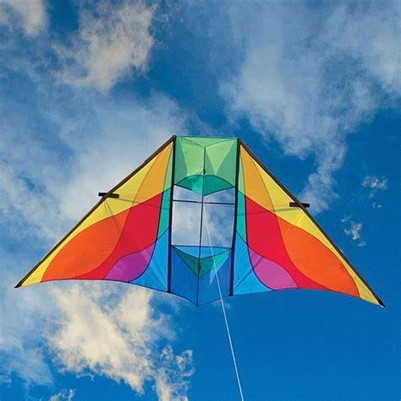
Delta kites are among the most common and widely used kites around the globe.
Known for their ability to fly in very light breezes, Delta kites are an ideal choice for beginners.
These kites, with their distinctive triangular shape, feature a keel that maintains the spine’s straightness and rigidity.
To preserve their shape, Delta kites often have a spreader on the back.
They are available in both single and dual-line versions, catering to different skill levels.
Some models include tails for stability, especially useful in strong winds and rough weather.
Material-wise, Delta kites are typically made from ripstop nylon, with special light-wind variants crafted from spinnaker fabric for enhanced aerodynamics.
2. Diamond Kites: A Universal Favorite
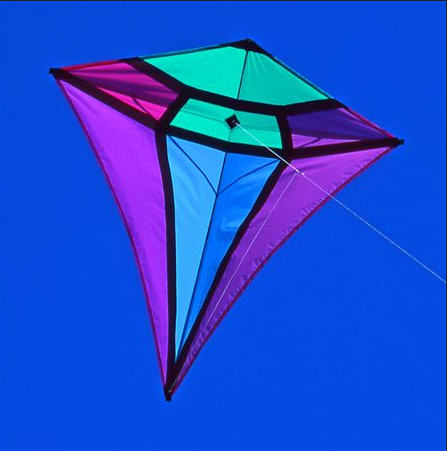
Diamond kites are perhaps the most recognizable and popular among the different types of kites.
These kites, with their classic diamond shape, are a familiar sight in skies worldwide.
Their simplicity makes them not only popular but also easy to create, even at home.
Ideal for beginners and children, diamond kites make kite flying accessible and engaging.
However, they can be challenging to control at very steep angles.
Despite this, their durable construction allows them to withstand various weather conditions comfortably.
In terms of materials, diamond kites have evolved from traditional paper to modern ripstop nylon, enhancing their durability and weather resistance.
Their simple design means they can be crafted from a variety of materials, from plastic sheets to freezer bags, making them a versatile option for kite enthusiasts.
3. Parafoil Kites: Frameless and Safe
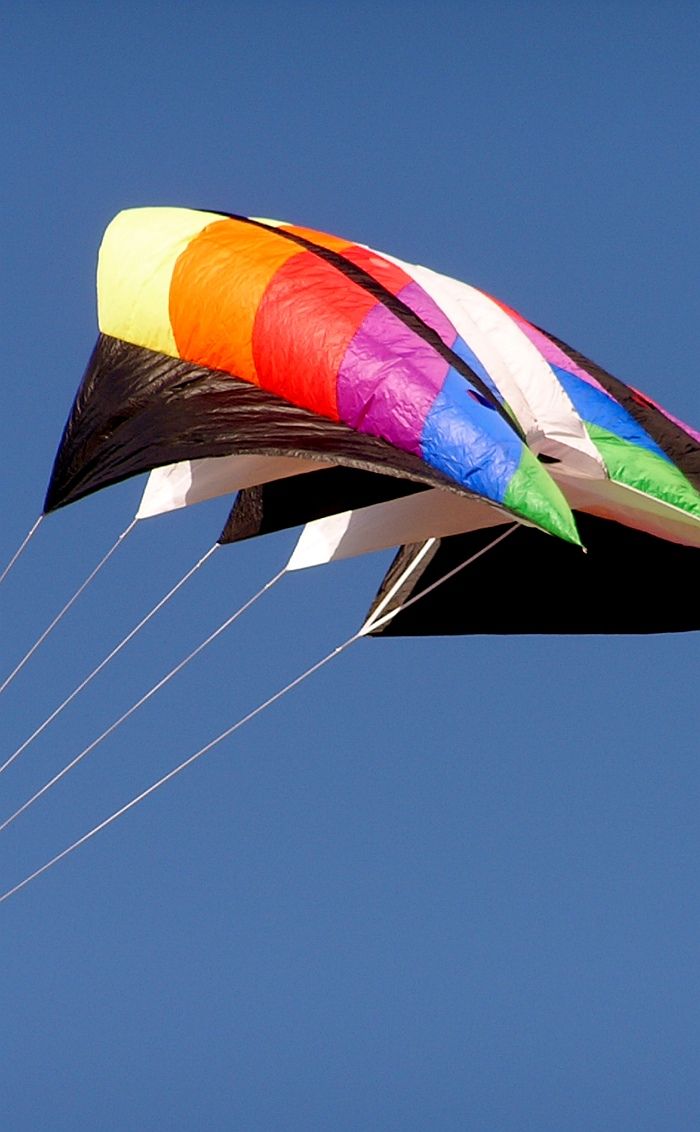
Parafoil kites, also known as foil kites, stand out among different types of kites due to their lack of a rigid frame.
This frameless design reduces the risk of damage or breakage upon impact with hard surfaces, making them an excellent choice for beginners.
These kites consist of an upper and a lower surface, separated by vertical ribs that create multiple air cells.
As the kite flies, air fills these cells, giving the kite a semi-rigid structure that aids in flight stability.
Some parafoil kites have an increased number of cells to enhance their shape maintenance.
Parafoil kites resemble parachutes in design, and they have indeed inspired parachute and paraglider technology.
Available in single, dual, and quad-line models, they cater to various flying experiences.
Material-wise, parafoil kites are predominantly made from lightweight rip-stop nylon, and in some cases, high-quality polyester is used to further enhance their lightness and durability.
4. Cellular Kites: Intricate 3D Designs
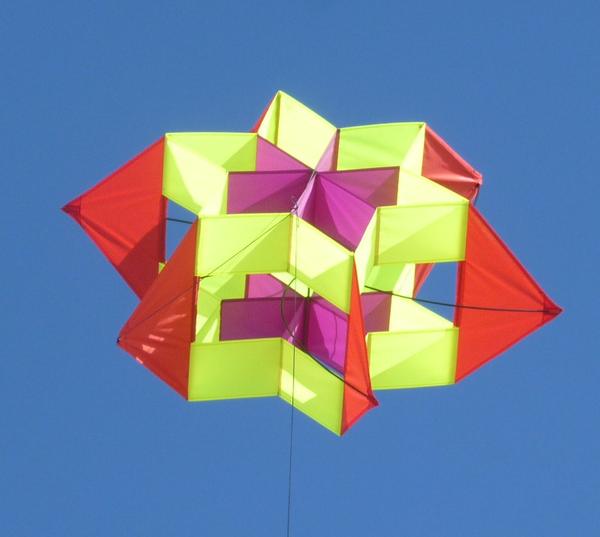
Cellular kites are a fascinating category among the different types of kites, characterized by their intricate three-dimensional shapes and diverse designs.
Box kites, which are a common type within this category, consist of four lightweight rods forming a square structure, wrapped in sails or ribbons to create a box-like appearance.
These kites can be quite elaborate, often featuring additional elements such as fins, vanes, or wings for aesthetic and functional purposes.
The Cody kite, a notable type of cellular kite, resembles a boxed kite with inverted wings, while the Hargrave kite, shaped like a triangular box with lateral wings, is another example showcasing the variety within this category.
Cellular kites often take on creative forms, including snowflakes and stars.
Cellular kites, due to their structure, are heavier and require a consistent breeze for flight.
They need a strong gust of wind to lift off and maintain altitude.
Flying these kites requires a certain level of skill, making them a challenging but rewarding choice for kite enthusiasts.
In terms of materials, cellular kites are commonly made from ripstop nylon.
However, those who enjoy DIY projects, they can also be created at home using lightweight materials like newspaper or construction paper.
5. Sled Kites: Portable and Kid-Friendly
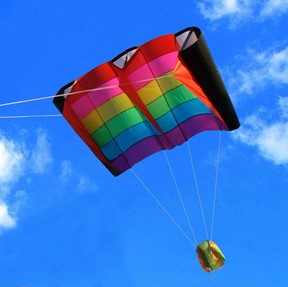
Sled kites, a unique type among the different types of kites, are identified by their single surface design and vertical spars on the sides.
These spars are crucial in maintaining the kite’s shape during flight.
Traditionally made from sturdy sticks, modern sled kites often feature inflatable spars, enhancing their resilience to heavy collisions and crashes.
The innovation of inflatable spars has also made sled kites highly portable.
They can be easily folded and stored in small spaces, making them an excellent choice for travel.
Additionally, their manageable size renders them particularly suitable for children.
In terms of materials, sled kites are predominantly crafted from lightweight plastic, offering versatility and durability.
For those interested in making their own, lightweight fabric or paper can be used, but plastic remains the most reliable material for homemade sled kites.
6. Stunt Kites: Masters of Aerial Acrobatics
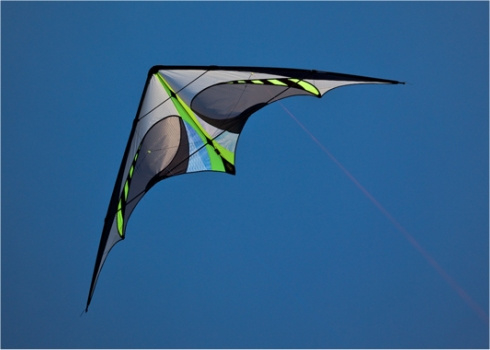
Stunt kites, also known as sport kites, are celebrated among different types of kites for their remarkable ability to execute impressive aerial maneuvers.
Ideal for kite enthusiasts who love to perform tricks, these kites become incredibly responsive once you master their control.
While available in various shapes and sizes, the triangular, delta-shaped stunt kites are particularly popular.
These kites often come with dual lines, offering greater control and ease in performing precise tricks compared to single-line kites.
For those seeking even more control, quad-line stunt kites are available, allowing manipulation of each corner of the kite for intricate aerial displays.
Stunt kites are perfect for those eager to delve into the thrilling world of kite stunts. However, they do pose certain risks, and safety is paramount.
Always ensure that both the kite manufacturer and the flyer take appropriate safety precautions.
In terms of materials, stunt kites need to be lightweight yet durable due to their high susceptibility to crashes.
Typically made from ripstop nylon and polyester, these kites require precise construction, making them challenging to create at home.
7. Rokkakus: Traditional Japanese Artistry

Rokkakus, hailing from Japan’s rich kite-making tradition, have gained popularity in the West as a distinct type among different types of kites.
These six-sided fighter kites are shaped like vertically elongated hexagons and feature a four-point bridle.
Rokkakus are not just flying objects; they are often adorned with mythological and artistic representations, such as Samurai faces or symbols of wealth, making them a flying canvas of Japanese culture.
The design of Rokkakus, with its extensive surface area, offers two significant advantages.
First, their aerodynamic shape allows for optimized flight, capable of staying aloft in minimal breeze conditions.
Second, their size provides an ideal canvas for intricate artwork, a practice that continues to be cherished both in Japanese and Western interpretations of the kite.
This artistic aspect ensures that Rokkakus capture attention wherever they fly.
Traditionally, Rokkakus were crafted from washi paper and bamboo fibers, materials that offered lightness but limited durability.
Modern Rokkakus, however, have evolved to use ripstop nylon combined with carbon fiber spars, enhancing both their durability and flight capabilities.
8. Traction Kites: Powerhouses of Kite Sports
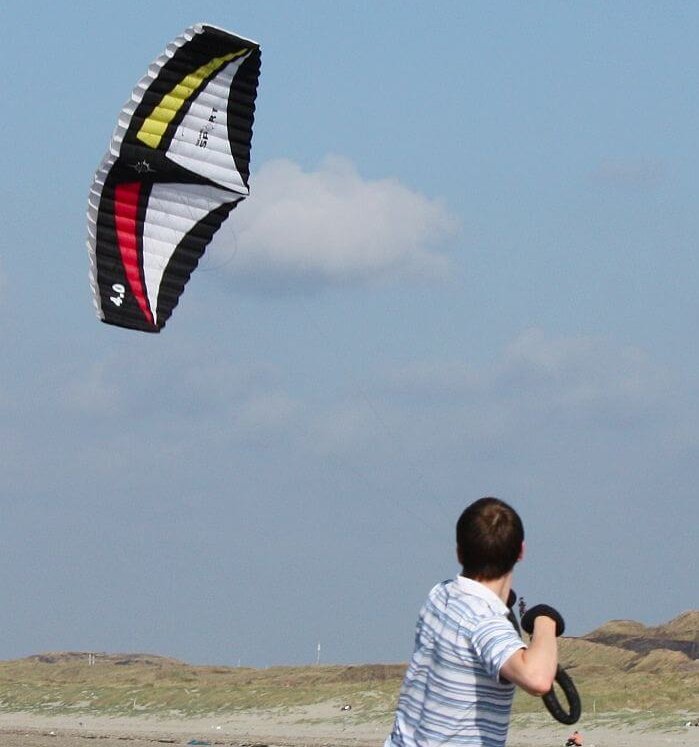
Traction kites, also known as power kites, are formidable in size and are engineered to generate significant pull.
These kites play a pivotal role in various traction sports, where they are coupled with different vehicles such as kiteboards, snowboards, skis, and skates.
In sports like kitesurfing, kite boating, and kite skating, traction kites are essential, providing the necessary force and control.
They can be thought of as a specialized type of foil kites, equipped with four lines that offer precise control.
Among the variants, the leading-edge inflatable kite is particularly popular for its performance.
Other less common types include rigid-frame kites and soft single-skin kites.
When it comes to materials, traction kites are typically made from ripstop nylon.
This material is chosen for its durability and ability to withstand significant air pressure, making it ideal for the demands of kite sports.
How to Fly the Different Types of Kites?
Mastering the art of flying various kites starts with proper launching. The basic launching technique is similar across different types of kites, be it Delta, diamond, or parafoil kites.
Here are some general steps to follow for a successful launch:
- Begin by unrolling a few feet of the flying line.
- For dual-line or quad-line kites, ensure that all lines are evenly balanced.
- Position the winder either on the ground or in one hand, while holding the keel with the other.
- Gently raise the kite until it catches the wind.
- Once the wind engages the kite, smoothly and steadily unroll the line to let it ascend.
In light wind conditions, you may need assistance:
- Unroll about 50 to 70 feet of the line to start.
- Have a friend hold the kite at one end while you stretch out the line.
- When your friend releases the kite, pull the line steadily to help it rise.
Sled kites are particularly user-friendly, especially in terms of setup. Simply unwrap and unroll the kite, and allow the wind to fill it for effortless launching.
For traction kites, used in conjunction with sports equipment, adhere to these basics:
- Ensure all lines are symmetrical and of equal length.
- Pull the handles at the top to encourage immediate lift-off.
Conclusion
While this article highlights eight distinctive types of kites, it’s important to remember that the world of kites is even more vast and varied.
Kites have been an integral part of cultures around the globe for centuries, ranging from royal and ceremonial kites to the traditional ones we see in our everyday lives.
Each type of kite, with its unique design and purpose, contributes to the rich tapestry of this age-old tradition, offering enjoyment and fascination to kite enthusiasts of all ages.
Whether you’re a beginner or an experienced flyer, exploring the different types of kites can be a rewarding and exhilarating journey.

